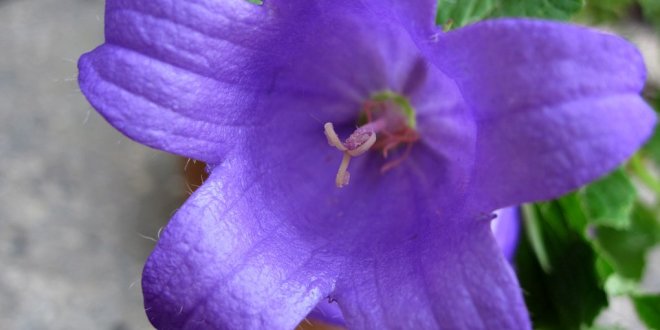With their nodding heads, Campanula, or bellflower plants, are pretty perennial flowers. Bellflowers will bloom heaviest in June and July but can delight you with flowers all the way into October in some areas. The plant is native to many of the U.S. regions where cool nights and moderate temperatures prevail, creating ideal conditions for growing bellflowers.
They require full sun for best flower production and well-drained soil with moderate moisture. Once established, bellflower plants can tolerate periods of drought. Soil conditions for growing bellflowers can be any pH range, including highly acidic.
How to Grow Campanula Bellflowers
To plant rhizomes, sever them from the parent plant at a root node and bury the roots in the soil.
Caring for bellflowers does not require any expertise. As with most perennials, they are hardy plants that tolerate quite a lot of extreme weather and arid conditions.
Bellflower care includes deadheading to promote more blooms and a longer lasting display. You can also cut it down to the ground in late winter to early spring to rejuvenate the plant. Also, some varieties of bellflower have invasive potential and seed heads need to be removed before they spread.
Details
Genus: Platycodon (plat-ee-KO-don) (Info)
Species: grandiflorus (gran-dih-FLOR-us) (Info)
Synonym:Campanula glauca
Synonym:Platycodon glaucus
Synonym:Campanula grandiflora, Balloon Flower, Chinese Bellflower, Japanese Bellflower, Toraji, Platycodon grandiflorus
Category:
Perennials
Height:
24-36 in. (60-90 cm)
Spacing:
12-15 in. (30-38 cm)
Hardiness:
USDA Zone 3a: to -39.9 °C (-40 °F)
USDA Zone 3b: to -37.2 °C (-35 °F)
USDA Zone 4a: to -34.4 °C (-30 °F)
USDA Zone 4b: to -31.6 °C (-25 °F)
USDA Zone 5a: to -28.8 °C (-20 °F)
USDA Zone 5b: to -26.1 °C (-15 °F)
USDA Zone 6a: to -23.3 °C (-10 °F)
USDA Zone 6b: to -20.5 °C (-5 °F)
USDA Zone 7a: to -17.7 °C (0 °F)
USDA Zone 7b: to -14.9 °C (5 °F)
USDA Zone 8a: to -12.2 °C (10 °F)
USDA Zone 8b: to -9.4 °C (15 °F)
USDA Zone 9a: to -6.6 °C (20 °F)
USDA Zone 9b: to -3.8 °C (25 °F)
Sun Exposure:
Sun to Partial Shade
Danger:
N/A
Bloom Color:
Pink
Medium Blue
White/Near White
Bloom Time:
Mid Summer
Late Summer/Early Fall
Foliage:
Herbaceous
Blue-Green
Other details:
Average Water Needs; Water regularly; do not overwater
Soil pH requirements:
6.1 to 6.5 (mildly acidic)
6.6 to 7.5 (neutral)
7.6 to 7.8 (mildly alkaline)
Patent Information:
Non-patented
Propagation Methods:
By dividing the rootball
From seed; sow indoors before last frost
From seed; direct sow after last frost
Seed Collecting:
Allow pods to dry on plant; break open to collect seeds
Read more: http://davesgarden.com/guides/pf/go/72/#ixzz3HPVpyISf








